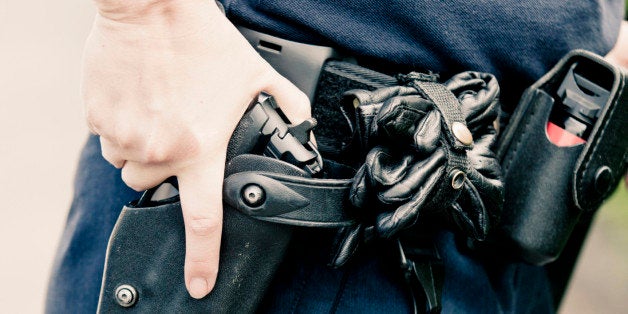
During a stop for what should have been a routine seatbelt ticket, things turned violent. On September 24, 2014, midafternoon, Hammond police pulled over Lisa Mahone because she and Jamal Jones, who was riding in the front passenger seat, were not wearing seatbelts as required by state law, according to police. Ms. Mahone's children, ages 14 and 7, were in the backseat. What happened next would have at one time been a verbal or testimonial matter of dispute. Hammond police officers smashing a car window and then Tasing and arresting Mr. Jones, would normally end up as a "he said/they said" disagreement between the police and the now-accused Jones. (He is charged with resisting law enforcement, failure to aid an officer and not wearing a seatbelt now.)
As a former public defender, I can remember being assigned to a misdemeanor call in what was then called Branch 28 on Monroe and Racine in Chicago. My more seasoned partner in the courtroom told me when I first started there that if I saw a client in the lock-up with injuries, I could be certain that he would be charged with disorderly conduct, resisting arrest or assault on an officer, depending on how badly he had been injured. I didn't want to believe it, but it turned out it was true. It was also true that sometimes my client had resisted arrest or assaulted the officer. But sometimes the defendant would get hurt by police just for not having the "right attitude." Oh, and being black or brown didn't help the client much either. When there would be a swearing contest between the accused and the police, unsurprisingly, the police would win. After all the defendant was biased and the officer was just doing his or her job, and it is a dangerous job at that.
Back then there would have been no independent witness, and so there it would stay. The officer could have been right, wrong or somewhere in the middle, but nothing would happen to that officer even if he was in fact in the wrong.
As the former Chicago police commander Jon Burge torture scandal has shown, it can take hundreds of victims and decades of abuse before anyone begins to believe that police are human and sometimes do wrong. But in this case things are a bit different, because there is a witness, in the form of a video (actually, allegedly, two) -- one taken by the teenage son of Mahone, who was a backseat passenger in the car, and one taken by officers (which they have yet to release).
In the video that was released, you see Mr. Jones handing the ticket he received for not having insurance to the officer and then some conversation occurs. The police say that he was reaching for something in the backseat and they thought it might be a weapon. Mr. Jones (according to the civil rights law suit that is now pending) says he was getting what the police asked for out of the backpack behind him. What the video shows next is the officer smashing the window in with his baton, grabbing and Tasering Jones; you hear the 7-year-old crying. Looking at the video, it is difficult to see what would cause the police to be in fear, other than Jones' refusal to exit the car. He refused, he says, because he was afraid to. Where does such a feeling come from? It comes from history. We unfortunately have a long history of police misconduct and abuse, sanctioned by law in the past and by practice more recently, of mistreatment of minorities by police.
What happens when there is a long history of a community feeling that the police are not there to help them, but to hurt them? When the police feel that every dark face is dangerous? When the public has long believed the police on this issue? Ferguson, Missouri, happens. And not only that but the killing of Michael Brown (an unarmed black teenager) by a white police officer it is seen differently depending on who you are. Minorities feel that racism plays a large part in their lives; white people feel it is over and if there is race discrimination it is against white people.
Perhaps the advent of cameras will help us all to see better, to understand another perspective, and maybe we can hold everyone -- citizens and police -- equally accountable.